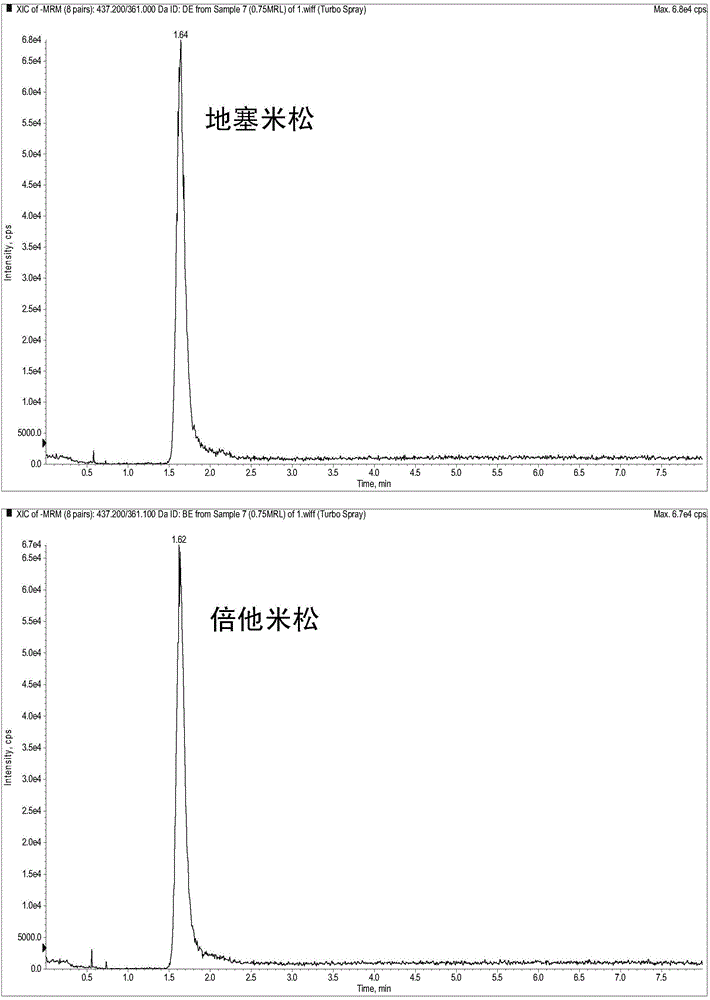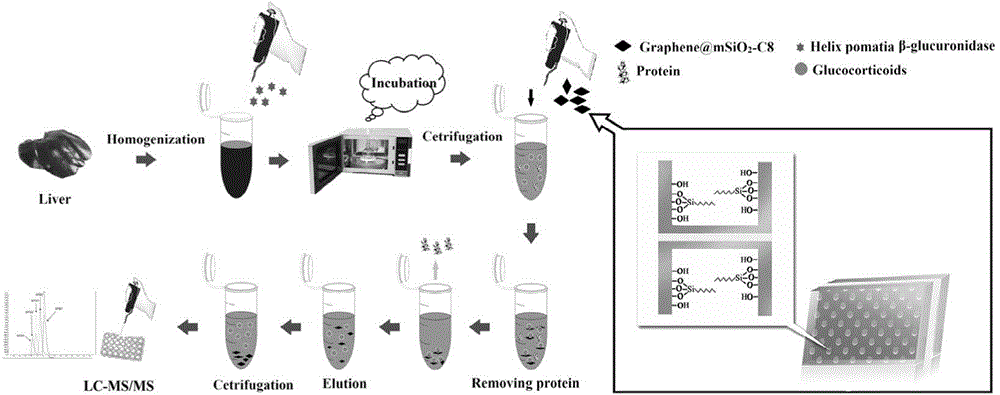Method for pre-treating veterinary drug residual quantity in detection of animal tissue
A technology for veterinary drug residues and detection of animals, applied in the field of pharmaceutical analysis, can solve the problems of large influence of matrix effect, cumbersome process, difficult analysis, etc., and achieve the effect of improving accuracy
- Summary
- Abstract
- Description
- Claims
- Application Information
AI Technical Summary
Problems solved by technology
Method used
Image
Examples
Embodiment 1
[0030] Example 1 A pretreatment method for the detection method of glucocorticoid drug residues in animal liver
[0031] Alkyl-modified graphene mesoporous silicon composites are dispersed in 50% methanol to make a 10 mg / mL dispersion for use;
[0032] Crush 5 g of fresh pig liver into tissue homogenate, add 10 mL of sodium dihydrogen phosphate-disodium hydrogen phosphate buffer solution to adjust the pH to 5.2, add 100 μL of 160 KU / mL β-glucuronidase solution and 50 μL of 0.2 ng / mL hydrogenated cocoa The pine solution was incubated in a constant temperature water bath at 40°C for 4 hours or microwave (600W) assisted enzymolysis for 0.5min or infrared assisted enzymolysis (400W) for 0.5h;
[0033] After incubation, the resulting solution was centrifuged at 8,000 rpm for 15 minutes, and the supernatant was taken, and the precipitate was washed with 10 mL of ethyl acetate. After washing twice, the ethyl acetate collected by centrifugation was combined with the supernatant; the r...
PUM
 Login to View More
Login to View More Abstract
Description
Claims
Application Information
 Login to View More
Login to View More - R&D
- Intellectual Property
- Life Sciences
- Materials
- Tech Scout
- Unparalleled Data Quality
- Higher Quality Content
- 60% Fewer Hallucinations
Browse by: Latest US Patents, China's latest patents, Technical Efficacy Thesaurus, Application Domain, Technology Topic, Popular Technical Reports.
© 2025 PatSnap. All rights reserved.Legal|Privacy policy|Modern Slavery Act Transparency Statement|Sitemap|About US| Contact US: help@patsnap.com



